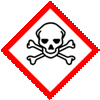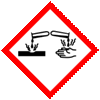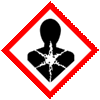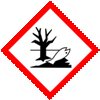Strong and Dilute Glutaraldehyde Pure & BP Ph Eur and Glutaraldehyde Solution Manufacturers, with SDS MSDS Sheet |
Supplier, Manufacturer, Exporter of Strong and Dilute Glutaraldehyde Pure & BP Ph Eur and Glutaraldehyde Solution, Muby Chemicals of Mubychem Group, established in 1976, is the original manufacturers of Specialty Chemicals, Pharmaceutical Excipient, Fragrance Food & Flavor chemicals, Reagent Grade Chemicals, Shale Gas Fracturing Chemicals in India. Mubychem Group has several manufacturing facilities spread across Western India and world wide contacts and toll manufacturers. We are exporting globally to countries like USA, Canada, Europe, UAE, South Africa, Tanzania, Kenya, Egypt, Nigeria, Cameroon, Uganda, Turkey, Mexico, Brazil, Chile, Argentina, Dubai, Korea, Vietnam, Thailand, Malaysia, Indonesia, Australia, China, Germany, France, Italy Portugal, Bangladesh, etc. The products are offered as per required specifications and in correct shape and size in mm or meshs or microns as specified by the buyer. The participating units have one or more accreditations like FDA - cGMP and GLP approval, ISO-9001 Certified, "REACH" Registered, ISO-14001, ISO/IEC 17025, ISO-22000, FSSC 22000, ISO 45001, Kosher Certified, Halal Certified, HACCP, FSSAI. We offer Commercial Pure & IP BP EP Ph Eur USP NF JP FCC Food Grade Analytical Reagent Grades of Chemicals |
| Bookmark this Web Site -- or -- Email This Page Info to a Colleague or Yourself |
Search our website here:







Glutaraldehyde CAS Number 111-30-8, EINECS EC Number 203-856-5, HS Code 29121990; Molecular Weight 100.12, Molecular Formula: CH2(CH2CHO)2
How big is your requirement or how small
We serve it all.
Specifications, Safety Data Sheet, Manufacturing process details, Wholesale retail buy sell prices, Uses etc available on line in these pages for Glutaraldehyde Pure and Solution.
For MSDS Sheet Click
MSDS Sheet of Glutaraldehyde Manufacturers
Spanish Glutaraldehído Fabricantes
Portuguese glutaraldeído fabricantes
Glutaraldehyde
Biogaurd Biocide Suppliers

In the USA, UAE, Iran Iraq, Kuwait, Saudi Arabia and other oil producing areas, several hundred chemical compounds are used in hydraulic fracturing also called fracking, fracing or frac. In some areas like UK only 'Non-Hazardous' chemicals are permitted for fracturing fluids by the Environment Agency. All chemicals have to be declared publicly and increasingly, food additive based chemicals are available to allow fracking to take place safely.
Mubychem is an internationally preferred source for Stimulation Chemicals and Hydraulic Fracturing Chemicals. We serve various oil and shale gas producing countries like USA UAE, Kuwait, Iran, Iraq, Saudi Arabia, UK, Europe India etc. We are never too far from your well-site with multiple 24/7 company owned or rented warehouses in the India, USA and across the globe. With customers in several countries, we sell almost all the fracturing chemicals.
Glutaraldehyde CH2(CH2CHO)2 is a pungent colorless oily liquid used to disinfect medical and dental equipment. It is also used for industrial water treatment and as a preservative and as a component of hydraulic fracturing "fracking" fluid. It is mainly available as an aqueous solution, and in these solutions the aldehyde groups are hydrated. Bacterial growth can impair the production of oil and gas wells glutaraldehyde is pumped as a liquid additive with the fracturing fluid to reduce or eliminate bacteria.
We offer glutaraldehyde as it is and in solution as per buyers requirement.
Specifications of Strong Glutaraldehyde Solution BP Ph Eur Grade
C5H8O2 100.1 CAS 111-30-8 anhydrous
Action and use: Used in treatment of warts.
DEFINITION
Strong Glutaraldehyde Solution is an aqueous solution of glutaraldehyde (pentanedial). It contains not less than 47.0% and not more than 53.0% w/w of glutaraldehyde, C5H8O2.
CHARACTERISTICS
A colourless or almost colourless solution.
IDENTIFICATION
A. Heat 1 mL with 10 mL of a solution containing 1 g of hydroxylamine hydrochloride and 2 g of sodium acetate in water on a water bath for 10 minutes, allow to cool and filter. The melting point of the residue, after washing with water and drying at 105C, is about 178C.
B. Add 0.05 mL to 2 mL of ammoniacal silver nitrate solution and mix gently for a few minutes. Silver is deposited.
TESTS
Acidity: Dilute 10 mL with 10 mL of carbon dioxide-free water and titrate with 0.1M sodium hydroxide using bromothymol blue solution as indicator. Not more than 5.0 mL of 0.1M sodium hydroxide is required to change the colour of the solution.
Clarity and colour of solution: Dilute 1 volume with 4 volumes of water. The resulting solution is clear and not more intensely coloured than reference solution.
Weight per ml: 1.126 to 1.134 g
Strong Glutaraldehyde Solution should be stored at a temperature not exceeding 15C.
We also manufacture and supply as under:
Alpha-Ketoglutaric Acid or 2-Oxoglutaric Acid
Manufacturers:
MUBY CHEMICALS
Ambernath Mumbai, Ankleshwar Gujarat, India
TEL: (OFFICE) +912223770100, +912223726950
Current Date Time in India GMT+5:30
e-mail: info@mubychem.com
USA, Canada, Mexico and other American neighbouring buyers may
e-mail: us@mubychem.com
Call toll-free 1-877-682-9243 (1-877-MUBYCHEM)

Copyright and Usual Disclaimer is Applicable.
Last 3 November, 2025




Exporters to USA Canada UAE Europe South Africa Tanzania Kenya Uganda Egypt Nigeria Turkey Mexico Brazil Argentina Chile Dubai etc.
Global or International Suppliers, Exporters, Importers, Manufacturers
I shall pass through this world, but once. If therefore, there is any good that I can do, or if there is any favor that I can show to a fellow human being, let me do it now. Let me not defer or neglect it. For I shall not tread this way again
Glutaraldehyde Solution SDS, Safety Data Sheet
MSDS Sheet, Material Safety Data Sheet 22-Oct-20
1. Product Identification
Product Name & Other Names: Glutaraldehyde Solution or Pentanedial or Glutardialdehyde or Glutaric acid dialdehyde or Glutaric aldehyde or Glutaric dialdehyde, 1,5-Pentanedial (for un-diluted material).
CAS No.: 111-30-8
EINECS EC Code: 203-856-5
Molecular Weight: 100.12 for un-diluted material.
Chemical Formula: CH2(CH2CHO)2 for un-diluted material.
Relevant uses and uses advised against (if any): Oil & Gas Wells fracturing and Industrial Manufacturing.
Suppliers: As per letterhead.
2. Hazards Identification
GHS, Globally Harmonized System Classification in accordance with 29 CFR 1910
Classification according to Regulation (EC) No 1272/2008
Corrosive to Metals (Category 1), H290
Acute toxicity, Oral (Category 3), H301
Acute toxicity, Inhalation (Category 3), H331
Acute toxicity, Dermal (Category 4), H315
Skin corrosion (Category 1B), H312
Serious eye damage (Category 1), H318
Respiratory sensitization (Category 1) H334
Skin sensitization (Category 1), H317
Hazardous to the aquatic environment, acute hazard (Category 1), H400
Labeling according to GHS USA & Regulation (EC) No 1272/2008
GHS Label Elements  Toxic | GHS Label Elements  Corrosive |
GHS Label Elements  Health Hazard | GHS Label Elements  Aquatic Toxicity |
Signal Word: Danger
Hazard Statements:
H290: May be corrosive to metals
H301: Toxic if swallowed
H312: Harmful in contact with skin.
H315: Causes skin irritation.
H317: May cause an allergic skin reaction
H318: Causes serious eye damage.
H331: Toxic if inhaled
H334: May cause allergy or asthma symptoms or breathing difficulties if inhaled
H400: Very toxic to aquatic life.
Precautionary Statements
P220: Keep/Store away from clothing/other combustible materials.
P221: Take any precaution to avoid mixing with combustibles.
P234: Keep only in original container.
P260: Do not breathe dust/fume/gas/mist/vapors/spray.
P264: Wash ... thoroughly after handling.
P270: Do not eat, drink or smoke when using this product.
P271: Use only outdoors or in a well-ventilated area.
P272: Contaminated work clothing should not be allowed out of the workplace
P273: Avoid release to the environment.
P280: Wear protective gloves/protective clothing/eye protection/face protection.
P284: Wear respiratory protection.
P301+P310+330: IF SWALLOWED: Rinse mouth and immediately call a POISON CENTER or doctor/physician.
P302+P352: IF ON SKIN: Wash with soap and water.
P303+P361+P352: IF ON SKIN (or hair): Remove/Take off immediately all contaminated clothing. Wash with plenty of soap and water.
P304+P340: IF INHALED: Remove victim to fresh air and keep at rest in a position comfortable for breathing.
P304+P341+P311 IF INHALED: If breathing is difficult, remove to fresh air and keep at rest in a position comfortable for breathing. Call a POISON CENTER or doctor/physician.
P305+P351+P338: IF IN EYES: Rinse cautiously with water for several minutes. Remove contact lenses, if present and easy to do. Continue rinsing.
P332+P313: If skin irritation occurs: Get medical advice/attention.
P314: Get Medical advice/attention if you feel unwell.
P330: If swallowed, rinse mouth.
P337+P313: If eye irritation persists: Get medical advice/ attention.
P360: Rinse immediately contaminated clothing and skin with plenty of water before removing clothes.
P363: Wash contaminated clothing before reuse.
P390: Absorb spillage to prevent material damage.
P403+P233: Store in a well-ventilated place. Keep container tightly closed.
P405: Store locked up.
P501: Dispose of contents/container in accordance with local/regional/national/international regulations.
Classification according to EU Directives 67/548/EEC or 1999/45/EC:
Hazard Symbol:
T = Toxic
Xi = Irritant
C = Corrosive
N = Dangerous for the environment
Risk Phrase:
R21 Harmful in contact with skin.
R23/25 Toxic by inhalation and if swallowed.
R38 Irritating to skin.
R41 Risk of serious damage to eyes.
R42 May cause sensitization by inhalation.
R43 May cause sensitization by skin contact.
R50 Very toxic to aquatic organisms.
3. Composition/Information on Ingredients
Ingredient: Glutaraldehyde 13-17% in water.
CAS Number: 111-30-8
EINECS EC Code: 203-856-5
4. First Aid Measures
Always seek medical attention after first aid measures are provided.
Inhalation: If Glutaraldehyde is inhaled, it will cause irritation and damage to nose and throat. It can cause headache, bleeding from nose coughing and chest discomfort. Remove the victim to fresh air. If not breathing, give artificial respiration. If breathing is difficult, give oxygen. Get medical attention.
Ingestion: It will cause irritation and burns to mouth, digestive tract and stomach. It may lead to pain, nausea, vomiting, and even collapse. Contact medical center quickly. Never give anything by mouth to an unconscious person. Get medical attention.
Skin Contact: On contact, it can cause itching, pain, swelling and redness. Immediately flush skin with plenty of water for at least 15 minutes. Remove contaminated clothing and shoes. Get medical attention. Wash clothing before reuse. Thoroughly clean shoes before reuse.
Eye Contact: It can cause severe damage to eyes. Check for and remove any contact lenses. Immediately flush eyes with running water for at least 15 minutes, keeping eyelids open. Cold water may be used. Get medical attention.
5. Fire Fighting Measures
Fire: Flash point: NA.
Auto ignition temperature: NA
Toxic fumes, carbon dioxide and carbon monoxide may be formed in fire.
Explosion: Not known.
Fire Extinguishing Media: Dry chemical, foam or carbon dioxide and water spray jet.
Special Information: In the event of a fire, wear full protective clothing and NIOSH-approved self-contained breathing apparatus with full face piece operated in the pressure demand or other positive pressure mode.
6. Accidental Release Measures
Personal precautions, protective equipment, and emergency procedures: Avoid breathing dust/fumes/gas/mist/vapors/spray. Use individual protective equipment (waterproof boots, suitable protective clothing, safety glasses, etc.). Restrict unprotected personnel from the area. Prevent any contact with hot surfaces. Do not approach facing the wind. Do not touch the spilled material.
Environmental precautions: Do not let the product enter drains, soil, or water sources.
Methods and materials used for containment Cleanup procedures and Storage:
Small Spill: Mop and pick up the material and place in an appropriate waste disposal container. Finish cleaning by spreading water on the contaminated surface and dispose of according to local and regional authority requirements.
Large Spill: Avoid mist formation. Keep away from heat. Keep away from sources of ignition. The concentration of Glutaraldehyde can be brought down by neutralizing with 1.25 moles of Diammonium Phosphate. Do not inhale dust, vapors, mist, or gas. Avoid dust formation. Contain spilled material. Cover with an inert, non-combustible absorbent material, (e.g. sand, earth, diatomaceous earth, vermiculite). Use a shovel to put the material into a convenient waste disposal container. Finish cleaning by spreading water on the contaminated surface and allow to evacuate as per law.
7. Handling and Storage
Precautions for safe handling: Apply according to good manufacturing and industrial hygiene practices. Ensure proper ventilation. In case of insufficient ventilation, wear suitable respiratory equipment. Wash thoroughly after handling. Do not drink, eat, or smoke while handling. Avoid contact with skin, eyes, and clothing. Minimize dust generation. Avoid breathing dust/fumes/gas/mist/vapors/spray. Avoid contact with eyes, skin, and clothing. Keep container tightly closed. Avoid ingestion and inhalation. Use individual protective equipment (waterproof boots, suitable protective clothing, safety glasses, etc.). Prevent any contact with hot surfaces.
Conditions for safe storage, including any incompatibilities: Store in cool, dry, and ventilated area away from heat sources and protected from sunlight in tightly closed original container. Keep air contact to a minimum. Store protected from heat, sparks and ignition sources and incompatible materials. Avoid contact with skin and eyes. Avoid inhalation of dust/mist/vapor. Do not store with incompatible materials like metals, strong acids & alkalis, oxidizing & reducing agents. Do not allow to freeze. Avoid contact. Do not store near food items or near Diammonium Phosphate.
8. Exposure Controls/Personal Protection
Airborne Exposure Limits: TWA: Long term (8 hours) & Short term(15 minutes) WEL is 0.05 ppm.
Ventilation System: A system of local and/or general exhaust is recommended to keep employee exposures as low as possible. Local exhaust ventilation is generally preferred because it can control the emissions of the contaminant at its source, preventing dispersion of it into the general work area. Please refer to the ACGIH document, Industrial Ventilation, A Manual of Recommended Practices, most recent edition, for details.
Personal Respirators (NIOSH Approved): For conditions of use where exposure to the substance is apparent and engineering controls are not feasible, consult an industrial hygienist. For emergencies, or instances where the exposure levels are not known, use a full-face piece positive-pressure, air-supplied respirator. WARNING: Air purifying respirators do not protect workers in oxygen-deficient atmospheres.
Skin Protection: Wear impervious protective clothing, including boots, gloves, lab coat, apron or coveralls, as appropriate, to prevent skin contact.
Eye Protection: Use chemical safety goggles and/or a full face shield where splashing is possible. Maintain eye wash fountain and quick-drench facilities in work area.
Other Control Measures: Maintain good housekeeping in work area. Dust deposits on floors and other surfaces may pick up moisture and cause the surfaces to become slippery and present safety hazards. Handle in accordance with good industrial hygiene and safety practice. Wash hands after handling.
9. Physical and Chemical Properties
Appearance: Colorless liquid.
Odor: Typical aldehyde smell.
Odor threshold: Not available.
pH: Not available.
Relative density: 1.025 approximate.
Melting point/freezing point: Not available.
Boiling Point: >100C
Flash point: Not available.
Auto-ignition temperature: Not available.
Decomposition temperature: Not available.
Upper/lower flammability or explosive limits: Not available.
Vapor pressure: Not available.
Vapor density: Not available.
Evaporation rate: Not available.
Flammability (solid, gas): Not available.
Partition coefficient: n-octanol/water: Not available.
Solubility: miscible with water
Viscosity: Not available.
Molecular Weight: 100.12 for un-diluted material.
Molecular Formula: CH2(CH2CHO)2 for un-diluted material.
10. Stability and Reactivity
Stability: Glutaraldehyde is stable under ordinary conditions of use and storage.
Hazardous Decomposition Products: Carbon dioxide, carbon monoxide and toxic fumes may form when heated to decomposition.
Hazardous Polymerization: Not reported.
Incompatibilities: Metals, strong acids & alkalies, oxidizing & reducing agents, heat and sparks.
Conditions to Avoid: Heat, flames, ignition sources and incompatibles.
11. Toxicological Information
Oral rat LD50: 134 mg/kg.
Carcinogenicity: No component of this product present at levels greater than or equal to 0.1% is identified as possible or confirmed human carcinogen by IARC, ACGIH, OSHA and NTP.
Teratogenic Effects: Not available.
Mutagenic Effects: Not available.
Developmental Toxicity: Not available.
Reproductive Effects: No information available.
12. Ecological Information
Environmental Toxicity: Toxic to fish and aquatic life.
Persistence and Degradability: The product is easily biodegradable.
Mobility: Likely to be mobile due to water solubility.
Bioaccumulation/ Accumulation: No information available.
Results of PBT and vPvB assessment: No data available for assessment.
13. Disposal Considerations
Whatever cannot be saved for recovery or recycling should be managed in an appropriate and approved waste disposal facility. Processing use or contamination of this product may change the waste management options. State and local disposal regulations may differ from federal disposal regulations. Dispose of container and unused contents in accordance with federal, state, and local requirements.
14. Transport Information
DOT USA, TDG Canada & ADR/RID Europe
UN Number: 3265
Proper shipping name: Corrosive liquid, acidic, organic. NOS (contains glutaraldehyde)
Class: 8, Packing group: II
IMDG
UN Number: 3265
Proper shipping name: Corrosive liquid, acidic, organic. NOS (contains glutaraldehyde)
Class: 8, Packing group: II
15. Regulatory Information
USA:
OSHA: Hazardous by definition of Hazard Communication Standard (29 CFR 1910.1200). SARA 302: No chemicals in this material are subject to the reporting requirements of SARA Title III, Section 302.
SARA 313: Section 313 of Title III of the Superfund Amendments and Reauthorization Act of 1986 (SARA). This product contains a chemical or chemicals which are subject to the reporting requirements of the Act and Title 40 of the Code of Federal Regulations, Part 372
SARA 311/312: Acute & Chronic.
California Prop 65: No Significant Risk Level: None of the chemicals in this product are listed.
Section 16 - Additional Information
European Labeling in Accordance with EC Directives:
H290 = May be corrosive to metals.
H301 = Toxic if swallowed.
H312 = Harmful in contact with skin.
H315 = Causes skin irritation.
H317 = May cause an allergic skin reaction
H318 = Causes serious eye damage.
H331 = Toxic if inhaled.
H334 = May cause allergy or asthma symptoms or breathing difficulties if inhaled.
H400 = Very toxic to aquatic life.
Classification according to EU Directives 67/548/EEC or 1999/45/EC:
Hazard Symbol:
T = Toxic
Xi = Irritant
C = Corrosive
N = Dangerous for the environment
Risk Phrase:
R21 Harmful in contact with skin.
R23/25 = Toxic by inhalation and if swallowed.
R38 = Irritating to skin.
R41 Risk of serious damage to eyes.
R42 May cause sensitization by inhalation.
R43 May cause sensitization by skin contact.
R50 Very toxic to aquatic organisms.
DISCLAIMER: The information and recommendations set forth herein are presented in good faith and believed correct as of the date hereof. It is compiled from various sources and it is not necessarily all inclusive nor fully adequate in every circumstance. In addition, these suggestions should not be confused with nor followed in violation of applicable laws, regulations, rules or insurance requirements applicable. This MSDS sheet is intended only as a guide to the appropriate precautionary handling of the material by a properly trained person using this product. Individuals receiving the information must exercise their independent judgment in determining its appropriateness for a particular purpose.
















